Kyoto is a must-visit city and area in Japan. There's so many things to see there that many visit several times, both to discover new places and to revisit favorites. But what if it's your first time? Here's a great 3-day itinerary especially for those visiting this amazing city for the first time.
Table of Contents
- Introducing Kyoto
- Day 1: Arashiyama District, Kinkakuji and more
- Day 2: Higashiyama South, Gion
- Day 3: Higashiyama North, Nishiki Market, Fushimi Inari
- Additional Tips About Traveling in Kyoto
Introducing Kyoto
Kyoto is a cultural center in Japan, partly due to its history as a prominent capital in Japan’s history before the capital was moved to Tokyo. (Read about former capitals in Japan here.) Kyoto is still iconic and a widely popular tourist location thanks to the preservation efforts by the locals for its architecture, food, crafts, clothing, and traditions.
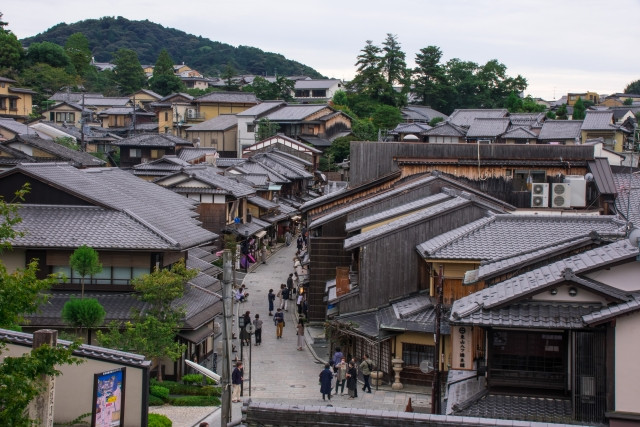
For example, Kyoto has many traditional wooden buildings built before 1950 called “Kyomachiya”. You can feel transported back in time because they line the streets with no tall buildings or signs that would ruin the atmosphere, thanks to the Kyoto City Scenic Zone Ordinance.
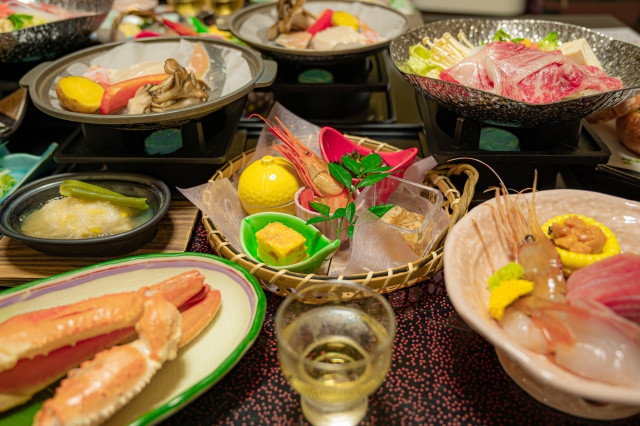
And of course, the food of Kyoto is widely talked about. You can get traditional course meals called kaiseki, traditional Japanese sweets called wagashi, a variety of Japanese pickles (tsukemono), and tea, the most famous of which is matcha or green tea. Uji matcha is the most popular type, and you can even visit the town of Uji to get it.

Kyoto souvenirs are must-buys. Whether as gifts or for yourself, there’s an assortment of things you can choose from, including packaged sweets, traditional crafts such as goods made with chirimen (silk fabric used for kimonos) and kanzashi (traditional hair decorations), and packaged sweets and food, such as yatsuhashi, konpeito, and tea.
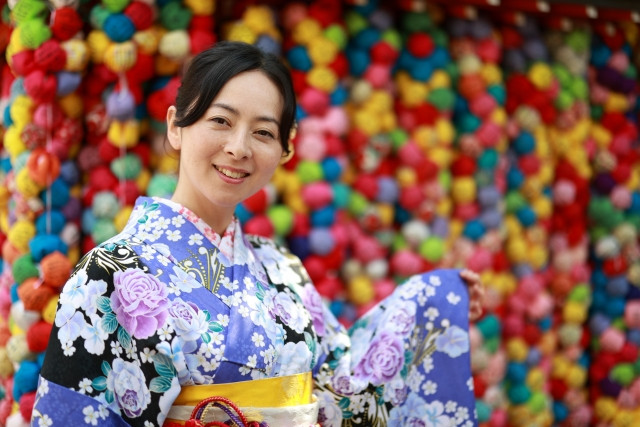
And don’t leave Kyoto without experiencing at least one form of traditional Japanese culture, whether it be tea ceremony, pottery making, traditional sweets making, Zen meditation and more. You can also rent a kimono and wear it to walk the streets of Kyoto, or even take a traditional rickshaw (jinrikisha)!
There’s many MANY places to visit in Kyoto but if it’s your first time, we recommend hitting up the following. We grouped them with relatively easy access to each other so you can be efficient with your trip and not have to worry too much about traveling time between each place. And we also list places you can experience the above charms of Kyoto, so don’t miss those!
(And this goes without saying, but wear comfortable clothes and shoes! You will be walking a lot!)
Writer's Pick
Kyoto Day 1 Itinerary: Arashiyama Area, Kinkakuji, Ryoanji
Depending on when you arrive in Kyoto on Day 1 and where you are staying, you may want to switch around the itineraries. But the following is doable on an afternoon, but it’s also possible to spend all day on the following especially if you take time to leisurely explore.
Arashiyama District
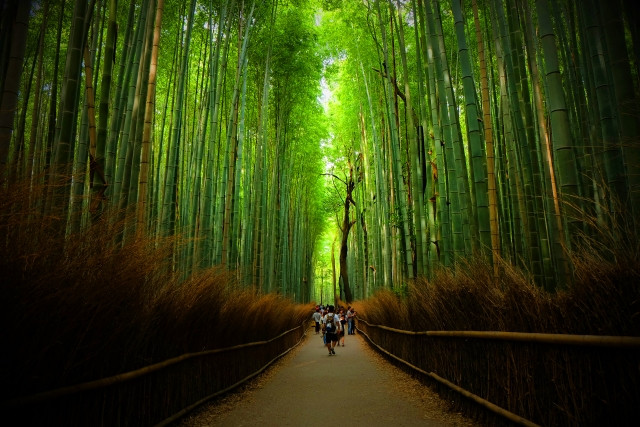
If you take the train, you will most likely arrive here through one of the following:
-
Arashiyama Station on the Hankyu Line
-
Arashiyama Station on the Keifuku (Randen) Line
-
Saga-Arashiyama Station on the JR Sagano Line
While you can access Arashiyama by bus, this is one of the places in Kyoto much more recommended to access by train.
Arashiyama Bamboo Grove
Of course the bamboo grove is what most people are excited to see the most when visiting the Arashiyama area. Walking through the pathway of the bamboo groves is very refreshing and peaceful. However, there are usually large crowds going through so if you want to get the best photos with less people, going early in the morning is best.
Arashiyama (Kameyama) Park
Especially beautiful in spring during cherry blossom season, this is a popular park with walking courses, a historical house and Japanese garden called Okochi Sanso (requires an entrance fee), observatories overlooking the Katsura River, traditional restaurants, etc. It’s a nice place to get away from the crowds of the bamboo grove and near the station.
Togetsukyo Bridge
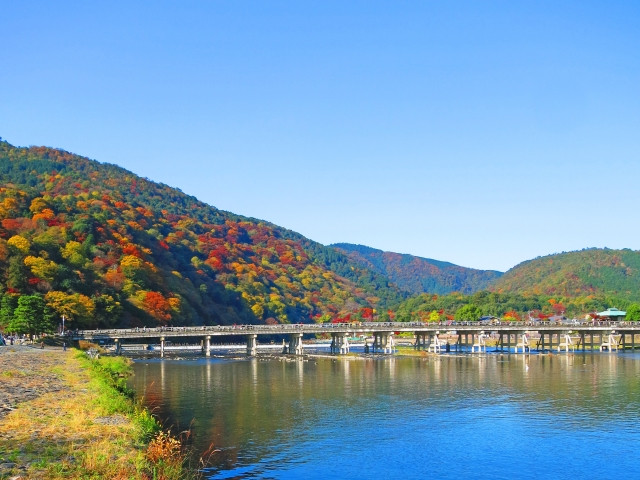
The famous bridge going over the Katsura River. It’s a great place to observe the seasonal views in the area, especially during spring and autumn. You can also observe traditional cormorant fishing and the river boats going by. (You can also take a ride as well!)
Tenryuji Temple
There’s many small temples and shrines in the area but if there’s one you should visit, it’s Tenryuji Temple, a UNESCO World Heritage site significant to Zen Buddhism. Arguably the biggest highlight is the garden with the reflective pond. It is actually the original from when the temple was first built, unlike the buildings that had to be rebuilt after being destroyed in a fire, and was also designated a Special Place of Scenic Beauty.
Some other temples and shrines to visit in the area if you have time:
-
Jojakko-ji Temple - a small quiet temple only busy during autumn leaves season
-
Mikami Shrine - very small shrine dedicated to hair
-
Gio-ji - known especially for its moss garden
and more!
Monkey Park Iwatayama
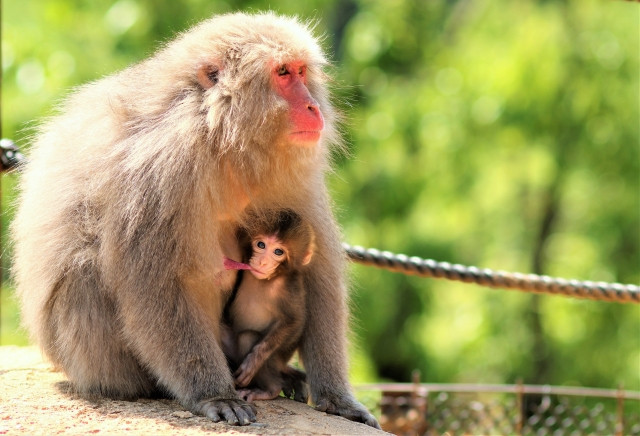
You can watch the wild monkeys that come down to play in this park area - and even feed them if you wish! Just a warning that it’s a bit of a hike up to the park so wear comfortable shoes. There’s also some playground equipment to enjoy, including a long slide!
Cost: 600 yen (adults), 300 yen (children)
http://www.monkeypark.jp/
Saga-Toriimoto Preserved Street
While there’s many aesthetic streets in Kyoto, one perhaps lesser known one is Saga-Toriimoto Preserved Street, which has been kept the way it has looked since the Meiji Period. However, as it’s a bit of a walk (15~20 min) from the main Arashiyama area, not as many people venture up here especially on their first visit to Kyoto. There are many temples and shrines to check out on the way and in the area, so if you don’t mind the walk, it’s a great area to explore and get away from the crowds.
Tenzan-no-yu Onsen
If you are in the Arashiyama area nearer to the end of the day or staying in the area, you can have a bath in this large hot springs facility - Tenzan-no-yu Onsen. You can enjoy the sauna and a mouthwatering meal as well to rejuvenate after a long day.
Kinkakuji
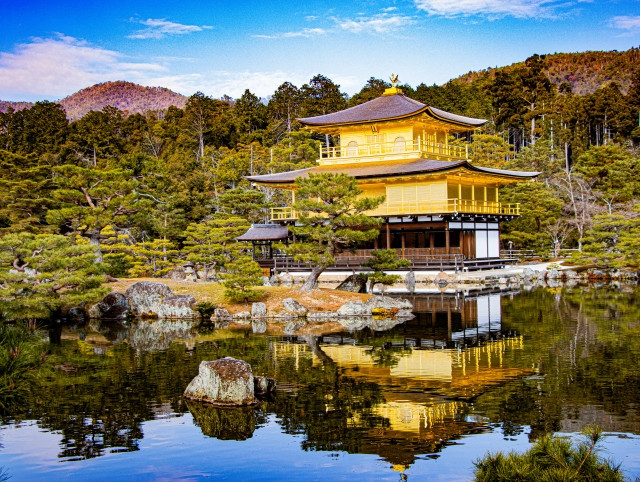
To get to Kinkakuji from Arashiyama, you would either have to take a taxi (more reasonable if you have a large group), or a combination of a train and bus as there’s no direct train or bus between the two.
But as it’s relatively close (about 30 minutes away), it’s very doable and great to visit as a set.
Kinkakuji is of course the famous Golden Pavilion, a UNESCO World Heritage Site. It’s considered among the top must-visit places in Kyoto, so definitely don’t miss it. It’s beautiful in any season, especially when you catch its reflection in the Kyoko-chi Pond.
Ryoanji
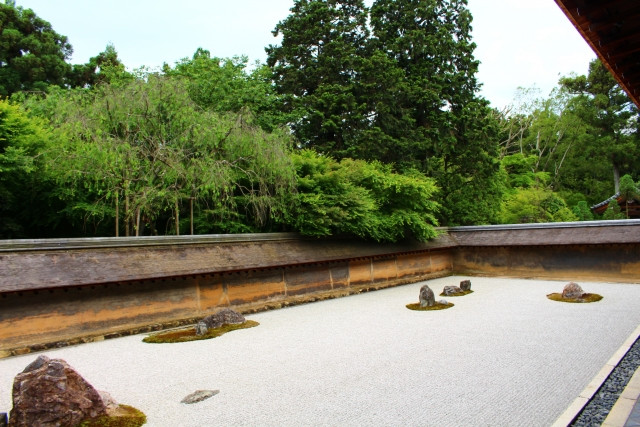
And if you’re at Kinkakuji, don’t forget to visit Ryoanji, another UNESCO World Heritage Site, known for its Zen rock garden. If you only have time to visit one rock garden in Japan, make it this one! It’s famous for being impossible to view all 15 rocks in the garden at the same time. It’s still fun to try! Just make sure you don’t disturb the other visitors sitting and quietly reflecting.
Kyoto Day 2 Itinerary: South Higashiyama Area, Gion
Higashiyama is a wide district full of various buildings and places to explore. We split it up into two days by north and south to give enough time to fully enjoy what each side has to offer.
South Higashiyama may have the scenery and photos most associated with Kyoto. You will find yourself exploring shrines, temples, teahouses, a famous geisha district, and some of the most popular places to be during spring and autumn.
Kiyomizudera Area
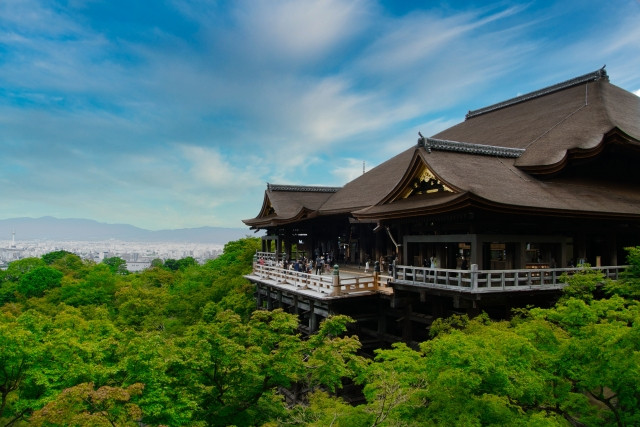
Kiyomizudera Temple
A UNESCO World Heritage Site and one of the most-visited temples in Japan. Kiyomizudera, which translates to “Pure Water Temple”, is popular throughout the year, especially cherry blossom and autumn leaves seasons because there’s a special light-up event during those times. You can also get a taste of “holy water” said to enrich your life straight from the waterfall on the premises.
Sannenzaka, Ninenzaka Streets
There’s various hills leading down from Kiyomizudera that branch off to different areas. You’ll find souvenir shops and other traditional shops. There’s even a Starbucks that’s built to blend in with the historical surroundings - and there’s even tatami flooring inside as well! These hills are where many tourist photos are taken when wearing yukata and kimono.
Hokanji and Yasaka Pagoda

If you’ve seen photos of Kyoto, it’s almost guaranteed you’ve seen photos of this pagoda in the background. The temple itself is called Hokanji but the pagoda is called Yasaka-no-tou, or Yasaka Pagoda. It’s popular to take photos from a distance to best capture the tall pagoda in the back of the traditional landscape.
Kodaiji Temple
A cozy Zen Buddhist temple, built in the early 1600s, with beautiful zen gardens worth visiting especially in spring and autumn. You can find it on the way down Ninenzaka Street.
Yasaka Shrine and Maruyama Park Area
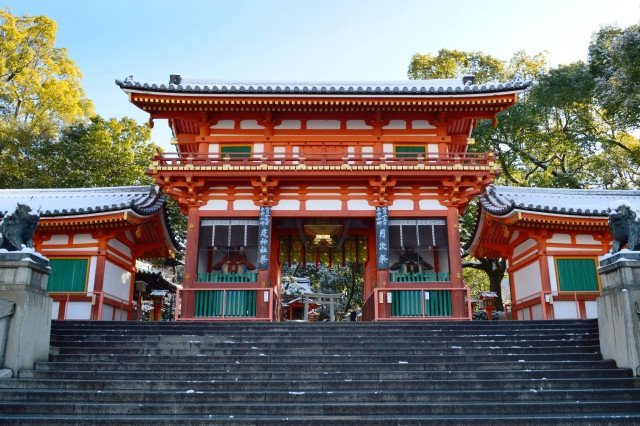
Yasaka Shrine
Not to be confused with Yasaka Pagoda mentioned earlier, this shrine is a famous spot located within Maruyama Park. It is one of the main locations for the Gion Festival, a huge Shinto event held in July. If you can time your visit during the festival, it’s a lot of good food, beautiful floats, and various parades. Otherwise, Yasaka Shrine is a beautiful serene location with a famous red gate at its entrance.
Maruyama Park
Maruyama Park can be a rest stop during the day, where you can relax under the trees and have some tea. In April, many tourists will make their way here to see the hundreds of cherry blossom trees, especially at night when they’re beautifully lit up. But even when it’s not cherry blossom season, it’s still a great place to catch your breath, but also to explore as it houses many shrines and temples on its grounds.
Other temples found within Maruyama Park include Chion-in and Shoren-in Temples.
Gion

Found just besides Maruyama Park and Yasaka Shrine is Gion, one of the most famous Geisha districts of Kyoto, housing many teahouses and high-end restaurants. Tourists love peeking into the narrow alleyways between buildings, getting a glimpse of the older ways of life in Japan. If you’re lucky, you may even see geisha walking to their next destination - however, make sure not to block their way, try to talk to them or take photos. Please observe quietly from a respectful distance.
The perfect place for people who want an expensive taste of Gion is located in Hanami Koji, known for its Japanese traditional course cuisine. It’s also where you can see geishas perform - dance, music and art - which they spend their lives training to do.
For other places to see geisha in Kyoto, check out our detailed article: Where to See Geisha in Kyoto.
And don’t forget to take a walk along the Kamogawa River at some point. There’s many restaurants along the river to check out, especially during summer when they offer outdoor seating along the river’s edge.
Kyoto Day 3 Itinerary: North Higashiyama, Nishiki Market, Fushimi Inari
On the last day, you can decide how much to do depending on how much time you have left. Here are our suggestions for how to make the last day fulfilling.
Northern Higashiyama: Ginkakuji, Tesugaku no Michi

Ginkakuji
Some argue that this temple is worth visiting more than its golden counterpart, Kinkakuji. It may seem more plain in comparison, but the serene Silver Pavilion features a beautiful garden featuring several different elements including moss, sand and bamboo, and a reflective pond.
Tetsugaku no Michi (Philosopher’s Path)
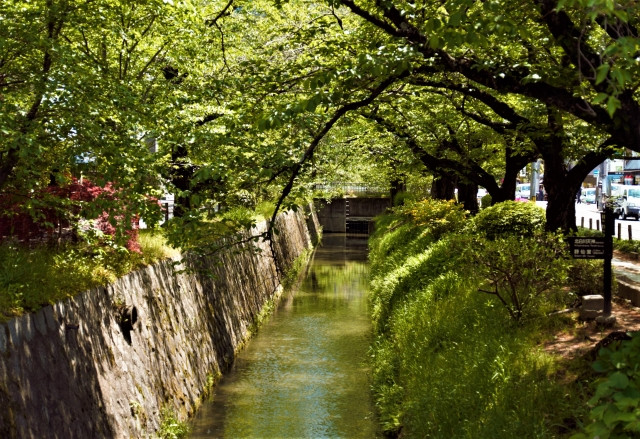
From Ginkakuji, walk along Tetsugaku no Michi, a beautiful path surrounded on both sides by cherry trees and along a canal. This path will lead to other shrines and temples along the way, or you could just enjoy the stroll. You may even spot cats along the way. It’s also popular to cycle along this route to get to various destinations faster.
Eikando
Although the temple’s official name is Zenrinji, it’s also known by the name of its main hall Eikando. This temple is known for many things - its view overlooking Kyoto, its beautiful pond and garden, and its wooden beautiful bridges and walkways, especially beautiful in autumn framed by the fall foliage, to name a few.
Nanzenji
You will first spot Nanzenji’s huge gate, named Sanmon Gate. At Nanzenji, you can find a peaceful rock garden, the main hall with beautiful drawings on the sliding doors, and an impressive brick aqueduct which makes for a great photo spot and place to explore.
Nishiki Market
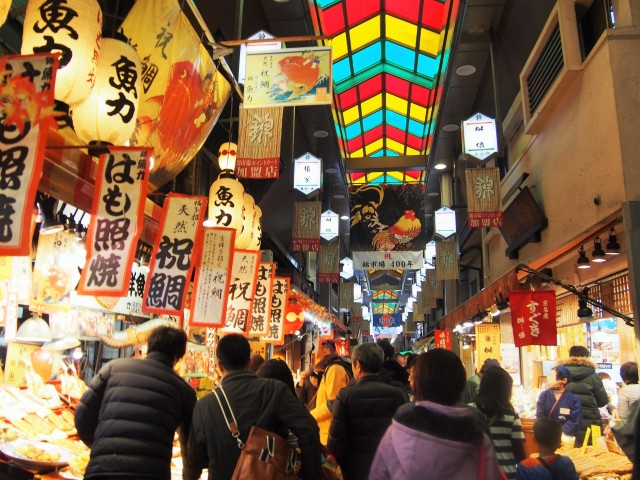
After exploring the Northern Higashiyama District Nishiki Market, head over to Nishiki Market for some food and souvenir shopping. You’ll find yourself in very narrow paths lined with shops selling ingredients, snacks, traditional items, and more. You can just eat as you go, or drop by one of the restaurants along the walkways. You can even pick up some kitchen utensils and other kitchenware to take home with you.
Read more about various Kyoto markets here.
Fushimi Inari Shrine
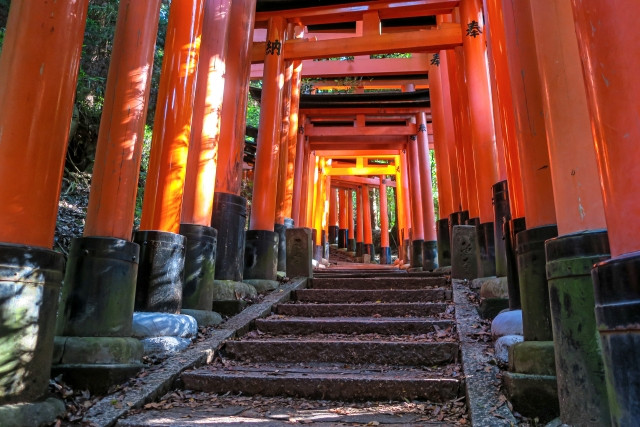
Another must-see in Kyoto, tourists can enjoy the fox statues and countless red torii gates found throughout Fushimi Inari Shrine as you walk the trails up the mountain. However, if you’re pressed for time, you can do what many other tourists do and just take pictures near the bottom without climbing the whole trail.
Additional Tips About Traveling in Kyoto
There’s so much to do in Kyoto that 3 days is honestly enough to see it all. However, what we listed above is a great start, and you can always go back to see more, or spend more time in one area if it appeals to you. We’ll leave you with some final suggestions.
Transportation
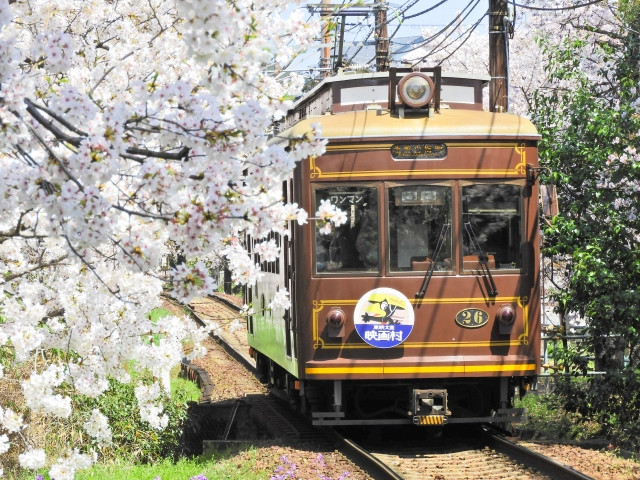
Getting around Kyoto can seem overwhelming if you don’t know what you’re doing, so make sure to plan ahead.
You can get around via bus, which is often cited as the easiest way as they offer a special pass. You can also take advantage of the various trains - just make sure to keep the different train lines straight.
There’s special passes for trains as well. We also recommend cycling if you’re staying in one area, as it can make travel between the temples and shrines easier and you can cover more ground in less time.
Best Time to Visit
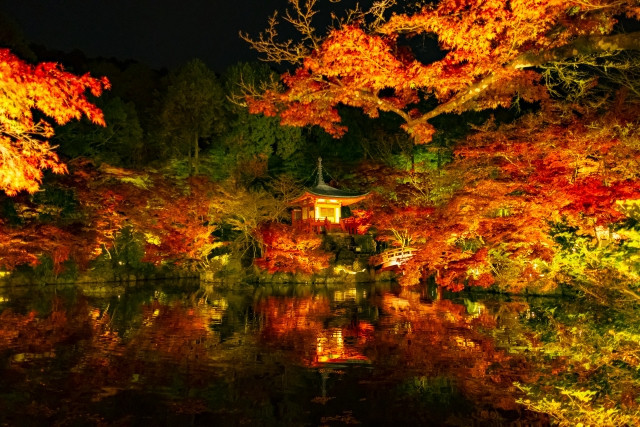
Kyoto is always busy with tourists, both domestic and international, as it’s known as the cultural center of Japan.
However, as you may have noticed when reading, there are 2 times during the year when it’s especially popular - cherry blossom season and fall foliage season. Everyone wants to see the beautiful traditional architecture against the gorgeous natural yet fleeting background. They even offer light-up events at night at locations that are otherwise closed in the evening during the rest of the year.
During these times, around the beginning of April and the middle of November in Kyoto, it’s especially crowded and expensive. The sights are worth it, but it’s up to you to decide whether the crowds and extra expense is. Otherwise, Kyoto during any other time is still highly recommended and guaranteed to be a good experience.
First Published on March 15, 2021; Updated November 07, 2022










.png)









.jpg)











